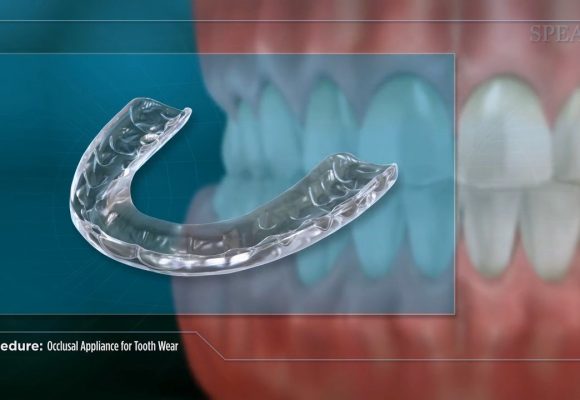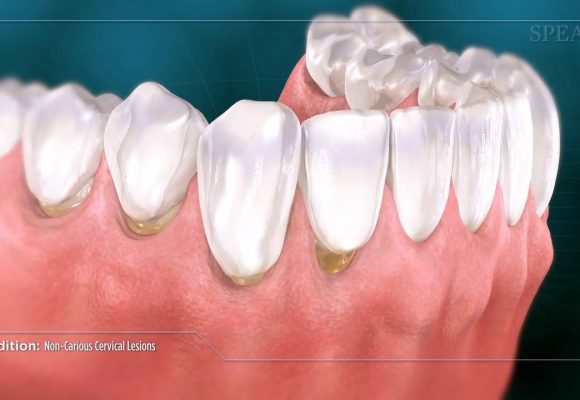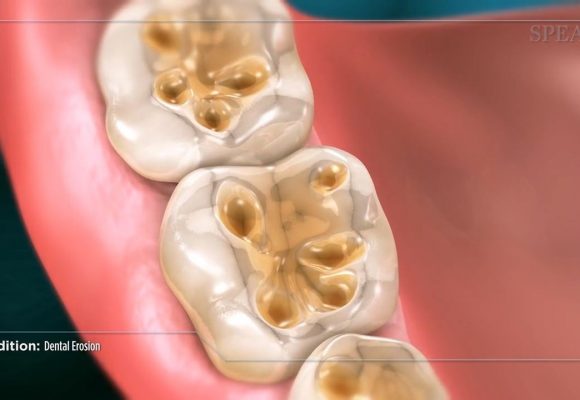Tooth wear is a dental condition where the surface and structure of teeth are progressively reduced as a result of internal and/or external forces placed upon them.
When hard tooth material is worn away as a result of teeth grinding and/or clenching, it is called attrition. The extent of wear damage depends on the amount of grinding, and is typically more severe in individuals who exhibit this behavior in their sleep. The reduction of hard tooth material due to chemical forces is called erosion. It can be caused by drinking acidic beverages like soda, or by medical conditions like acid reflux or bulimia. Over time, this acid dissolves the outer enamel of the teeth and can expose the softer underlying dentin layer.
Wear caused an outside object is called abrasion. Abrasion can be caused by improper tooth brushing technique, excessive use of toothpicks, and the use of the teeth as a tool. Abrasion can also result in grooves and notches in the enamel that can also expose the dentin. Excessive tooth wear causes many oral health complications, including unattractive and irregular tooth levels, jagged and sharp tooth edges, tooth pain and eventual loss of the teeth all together. As the harder outer surface of the tooth is worn away, the softer dentin will be exposed speeding up the process.
There are preventative and corrective treatment options for patients experiencing tooth wear issues. Treatment will vary based on the cause of wear and when it is detected, making it critical to work closely with your Doctor to proactively treat the issue before more damage is sustained.
Copyright © 2018 Spear Education. All rights reserved.
Related Articles

Occlusal Appliance for Tooth Wear
For clients experiencing tooth wear due to nighttime grinding and jaw clenching, your dentist may…
Read more
Non-Carious Cervical Lesions
Non-carious Cervical Lesions describes a condition where tooth structure is lost below the gumline due…
Read more
Dental Erosion
Dental erosion is a condition where tooth structure is lost due to corrosion, chemical reactions…
Read more